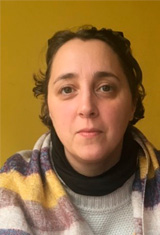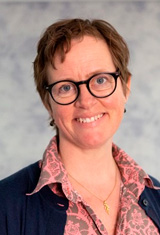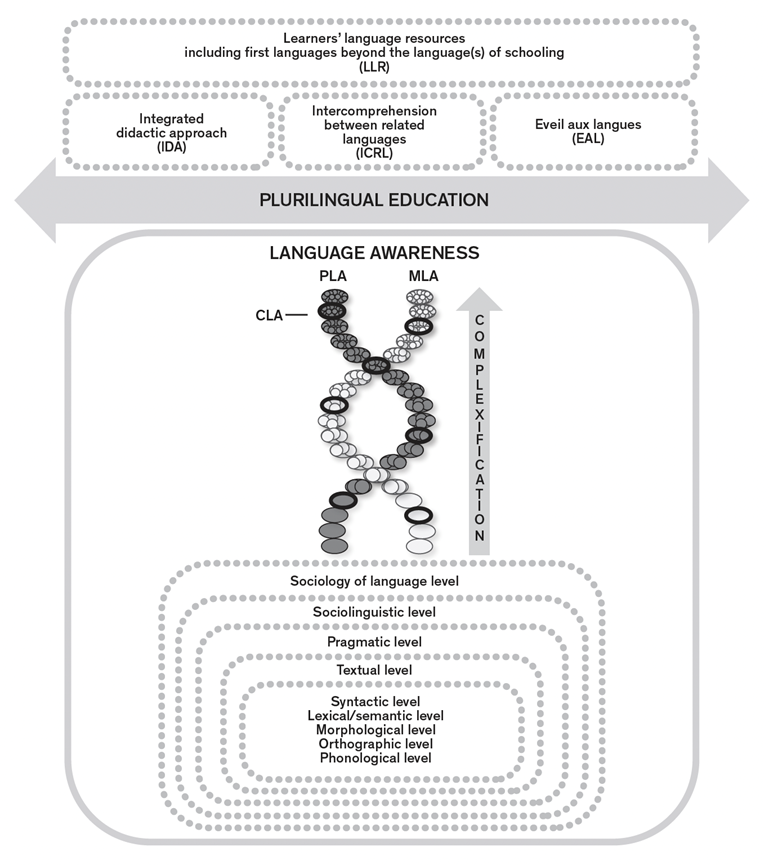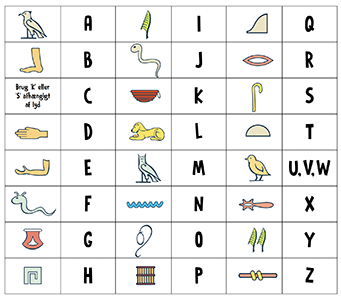The PE-LAL project: Plurilingual Education – Minority and Majority Students’ Language Awareness across Educational Levels
In recent years, plurilingual education has been subject to growing interest in educational research. The so-called pluralistic approach is based on students’ language resources and seeks to build bridges between languages (Danish, foreign languages, first languages, and other languages) in order to enhance all learners’ communicative competence and language awareness (LA). From our perspective, all foreign language learners are plurilingual because they learn more than one language as a result of schooling.
The PE-LAL project’s research questions, hypotheses, design, and operationalization of LA in the context of plurilingual education are described in Daryai-Hansen, Drachmann & Krogager-Andersen (2022).
Based on findings from the PE-LAL project and discussions with stakeholders across the Danish educational system at a workshop in the project’s final phase, Daryai-Hansen, Drachmann & Krogager Andersen (2023) have set up Recommendations to strengthen plurilingual education in language subjects in primary and secondary education in Denmark.

|

Natascha Drachmann, University of Copenhagen |

|
The project will establish a collaboration with a National and an International Advisory Board representing leading national and international researchers within the field of plurilingual education:
Members of the national advisory board (NAB):
- Senior Associate Professor Line Møller Daugaard, VIA University College
- Professor Anne Holmen, Københavns Universitet
- Senior Associate Professor Tom Steffensen, Københavns Professionshøjskole
Members of the international advisory board (IAB):
- Professor Nathalie Auger, Université Paul-Valéry
- Professor Åsta Haukås, Universitetet i Bergen
- Professor Britta Hufeisen, Technische Universität Darmstadt
- Professor Ulrike Jessner-Schmid, Universität Innsbruck
- Professor Beate Lindemann, UiT Norges arktiske universitet
- Associate Professor Christine Erna Elisabeth Möller-Omrani, Høgskulen på Vestlandet
- Professor Danièle Moore, Simon Fraser University
- Professor Anne Pitkänen-Huhta, Jyväskylän yliopisto
- Professor Heike Speitz, Universitetet i Sørøst-Norge
The members of the NAB and IAB represent and will contribute to bring together several key theoretical approaches within the field and have curriculum expertise from different contexts.
The teaching materials developed in the project are in Danish.
Atlantbib
Visit Atlantbib
Atlantbib is a book project, developed in collaboration between schools in the Nordic and Baltic countries, consisting of online non-fiction books in Danish, Norwegian (Bokmål, Nynorsk), Swedish, Elvish, Icelandic, Finnish, Faroese, Greenlandic, Estonian, Latvian, Lithuanian, Ukrainian, Frisian, German and different variants of Sami. On the site, students can write, translate and audio record books, but also read books written by other students. The site also contains various activities related to the non-fiction books.
- Target group: Primary and lower secondary education
- Subjects: All subjects across the school’s curriculum
Kulturbib
Visit Kulturbib
Kulturbib is a book project, developed in collaboration between schools on both sides of the Danish-German border, consisting of online e-books in Danish and German. All books are translated into both languages. The e-books focus on different topics within all school subjects, and several books have a special intercomprehension focus on Danish and German as neighboring languages.
- Target group: Primary and lower secondary education
- Subjects: All subjects across the school’s curriculum
Kulturakademi
Visit the teaching platform
Kulturakademi is a teaching platform in the Danish/German border region and contains teaching materials with a special focus on intercomprehension between related languages. The teaching materials are related to different themes dealing with Danish and German as neighboring languages.
- Target group: From primary to secondary to tertiary education
- Subjects: Danish and German
Knowledge bank on plurilingual education and translanguaging
Visit the knowledge bank (in Danish)
The National Centre for Foreign Languages has developed a knowledge bank with inspiration on how to work with plurilingual education and translanguaging in language teaching. The bank includes a theme booklet on plurilingualism and teaching materials for primary and lower secondary education as well as for teacher education.
- Target group: From primary to lower secondary education and teacher education
- Subjects: Danish, Danish as a second language, English, French, German and Spanish
Resource kit on plurilingualism in foreign language education
Visit the resource kit (in Danish)
The National Centre for Foreign Languages has developed resource kits on key topics within foreign language pedagogy and didactics, including a resource kit on plurilingualism. The kit consists of an introductory video on plurilingualism in the target languages, reflection questions, examples of tasks and activities for foreign language teaching as well as references to relevant literature.
- Target group: From primary to lower secondary education and teacher education
- Subjects: English, French, German and Spanish
Teaching material for the ‘General Language Awareness’ course
Visit the materials (in Danish)
As a result of a development project on plurilingual education in the ‘General Language Awareness’ course (Almen Sprogforståelse) in upper secondary school, the project’s teaching materials have been collected in a teaching material bank. The bank contains seven teaching modules, all based on pluralistic approaches to languages. The modules focus on different linguistic phenomena (e.g. morphology, syntax, language history) integrated in different themes (e.g. love, food, fairy tales and fables).
- Target group: Upper secondary education
- Subject: ‘General Language Awareness’ course
Learning corner
Visit Learning corner
Learning corner is a database, managed by the European Union, consisting of teaching materials, games and quizzes in the 24 official languages of the EU. The materials can be selected based on the criteria: age group, topic, type of material. As the database contains texts translated into a wide range of languages, it is a good place to start to find texts that can be worked with in parallel in multiple languages.
- Target group: From primary to tertiary education
- Subjects: Danish, foreign languages and subjects across the school’s curriculum
Bildetema
Visit: Bildetema
Bildetema is part of the Norwegian online platform Tema Morsmål which contains resources and materials in a plethora oflanguages. Bildetema is a plurilingual, interactive visual dictionary with illustrations, text, sound and animations and contains around 1900 entries divided into 31 themes such as ”the weather” or ”sports.” Bildetema is run in cooperation between Norway, Sweden and Denmark and has Norwegian Bokmål, Norwegian Nynorsk, Swedish, Danish and Enlish as primary languages. Many different minority languages such as Arabic and Somali can be chosen - up to 10 languages at a time.
- Target group: primary and pre-primary
- Subjects: materials may be used across the curriculum
Norden i Skolen
Visit Norden i Skolen
The platform Norden i Skolen, administrated by Foreningen Norden, consists of teaching materials within the field of inter-comprehension between Scandinavian languages and Nordic cultures. The material, available in Danish, Faroese, Islandic, Norwegian (Bokmål and Nynorsk), Swedish and some minority languages, can be selected according to three main categories (‘language and culture’, ’history and society’, ‘climate and nature’), educational levels, language subjects, thematic areas, learning focuses and teaching activities.
- Target group: Primary to upper secondary school
- Subjects: Foreign language education and subjects across the school’s curriculum
Plurilingual Guide: Implementing Critical Plurilingual Pedagogy in Language Education
Visit Plurilingual Guide: Implementing Critical Plurilingual Pedagogy in Language Education
The publication Plurilingual Guide: Implementing Critical Plurilingual Pedagogy in Language Education, published by the Plurilingual Lab at McGill University, consists of 10 tasks based on an inclusive critical plurilingual and pluricultural approach. The tasks are detailly described in a step-by-step guide and contains texts, links, and worksheets.
- Target group: Primary and upper secondary school
- Subjects: Foreign language education
Signs of language
Visit Signs of language
The Danish longitude project Signs of Language has for 10 years followed minority students’ literacy development within plurilingual education. The project’s website contains inspiration to plurilingual activities focusing on second language and literacy development in plurilingual classrooms aiming for lower and upper primary school and lower secondary school.
- Target group: Primary and lower secondary school
- Subjects: Danish, Danish as Second Language and subjects across the school’s curriculum
The CONBAT+ project
Visit the CONBAT+ project
The CONBAT+ project has developed teaching materials within the field of plurilingual and intercultural education, which has an embedded CLIL approach and can be used with students aged 6-20. The material, available in English, French and Spanish, can be selected according to educational levels, thematic areas, subjects and language of instruction.
- Target group: Primary to upper secondary school and beyond
- Subjects: Foreign language education and subjects across the school’s curriculum
The EDiLiC Association
Visit the EDiLiC Association
The EDiLiC Association has collected teaching materials within the field of plurilingual education from different projects in e.g., Austria, Canada, England, France, Germany, Luxemburg, Spain and Switzerland. The collection contains online activities and references to books dealing with the subject.
- Target group: Primary to upper secondary school and beyond
- Subjects: Foreign language education and subjects across the school’s curriculum
The European Language Portfolio
Visit the European Language Portfolio
The European Language Portfolio, based on The Common European Framework of Reference for Languages, translated from Norwegian into Danish. The portfolio consists of a language passport, a language biography and a language folder, and serves to enable the student (age 6-12) to visualize and reflect on his/her acquisition processes.
- Target group: Primary school
- Subjects: Danish as Second Language, English, French and German
The FREPA database
Visit the FREPA database
The FREPA database, facilitated by the European Centre for Modern Languages, Council of Europe, consists of teaching materials within the field of plurilingual and intercultural education. The material, available in a wide range of languages, can be selected according to educational levels, thematic areas, type of pluralistic approach and language of instruction.
- Target group: From pre-primary to upper secondary and beyond
- Subjects: Foreign language education and subjects across the school’s curriculum
Tidligere sprogstart (early language learning)
Visit Tidligere sprogstart
Research-based and in practice tested teaching material for English, French and German, which takes into account plurilingual education. The material, available in Danish, focuses on early language learning and consists of a language passport, a language portfolio and individual activities integrated within the teaching descriptions. All plurilingual activities come with an answer key.
- Target group: Primary school
- Subjects: English, French and German
Based on an abductive approach (Timmermans & Tavory, 2012) synthesizing existing theoretical conceptualizations within the field and empirical findings, the PE-LAL project has developed a conceptualization of students’ language awareness across educational levels in the context of plurilingual education.

The theoretically and empirically based conceptualization consists of:
- The context of plurilingual education
- The concept of students’ language awareness across educational levels
1. The context: Plurilingual education
Drawing on a further development of Candelier et al. (2010), plurilingual education reflects a continuum of three pluralistic approaches to languages and a transversal dimension:
- Integrated didactic approach
- Intercomprehension between related languages
- Éveil aux langues
- Learners’ language resources, including first languages beyond the language(s) of schooling
2. The concept of students’ language awareness across educational levels
Drawing on van Lier (1998, 2004) and empirical findings from the PE-LAL project, language awareness can be manifested as:
- Practical language awareness (PLA)
- Metalinguistic awareness (MLA)
- Critical language awareness (CLA)
The three dimensions of language awareness can be directed towards nine language levels. By further developing Daryai-Hansen, Drachmann & Meidell Sigsgaard (2019), the language levels cover the complex language system and distinguish between sociolinguistics at a micro and a macro level (Swann et al., 2004).
The conceptualization illustrates that students’ language awareness evolves becoming more complex. Thus, the conceptualization visualizes an age-related complexification of students’ language awareness.
See the following publication if you want to learn more about the PE-LAL project’s conceptualization:
Daryai-Hansen, P., Drachmann, N. & Krogager Andersen, L. (2024). Conceptualizing Students’ Language Awareness across Educational Levels in the Context of Plurilingual Education: Within- and Cross-Case Findings from Grades 1, 7 and 11. Language Awareness. https://doi.org/10.1080/09658416.2023.2300268
- Daryai-Hansen, P. & Drachmann, N. (forthcoming). Language teachers’ wellbeing in plurilingual education: Three qualitative portrays. I G. Sulis, S. Mercer & Å. Haukås (red.), Interdisciplinary approaches to multilingualism and language learner and teacher psychology (forthcoming). Routledge.
- Daryai-Hansen, P. & Drachmann, N. (forthcoming). Primary and lower secondary students’ metalinguistic awareness in the context of plurilingual education – A cross-case analysis. Language awareness.
- Daryai-Hansen, P. & Drachmann, N. (submitted). Plurilingual Education across Educational Levels – Conceptualization, Curriculum Analysis and Recommendations for Further Development. Nordic Journal of Language Teaching and Journal.
- Daryai-Hansen, P. & Drachmann, N. (submitted). Flersprogethedsdidaktik på tværs af uddannelsesniveauer – konceptualisering, læreplansanalyse og anbefalinger til praksisudvikling. Nordic Journal of Language Teaching and Journal.
- Daryai-Hansen, P., Drachmann, N. & Krogager Andersen, L. (submitted). Students’ Language Awareness across Educational Levels in the Context of Plurilingual Education - A Conceptualization. From Early Childhood to Adulthood: Plurilingual Education Across Educational Contexts. Transitions, Continuity, and Disruptions.
- Daryai-Hansen, P. & Drachmann, N. (2024). Flersprogethedsdidaktik. Akademisk Forlag.
- Daryai-Hansen, P. & Drachmann, N. (2024). ”I like exploring other languages”: Primary and Secondary Students’ Attitudes towards Plurilingual Education. International Journal of Multilingual and Multicultural Development. https://doi.org/10.1080/01434632.2024.2336098
- Daryai-Hansen, P., Drachmann, N. & Krogager Andersen, L. (2024). Conceptualizing Students’ Language Awareness across Educational Levels in the Context of Plurilingual Education: Within- and Cross-Case Findings from Grades 1, 7 and 11. Language Awareness. https://doi.org/10.1080/09658416.2023.2300268
- Daryai-Hansen, P., Drachmann, N. & Krogager Andersen, L. (2024). Sproglig opmærksomhed i rammen af en flersprogethedsdidaktik – en konceptualisering på tværs af uddannelsesniveauer. Sprogforum, 30(1), 40-46. https://doi.org/10.7146/spr.v30i1.145855
- Daryai-Hansen, P., Drachmann, N. & Krogager Andersen, L. (2023). Anbefalinger til en styrket flersprogethedsdidaktik i grundskolens sprogfag og i Almen Sprogforståelse i gymnasiet [Arbejdsnotat].
- Daryai-Hansen, P., Drachmann, N. & Krogager Andersen, L. (2023). Recommendations to strengthen plurilingual education in language subjects in primary and secondary education in Denmark. [Arbejdsnotat].
- Daryai-Hansen, P., Drachmann, N. & Krogager Andersen, L. (2020). Minoritets- og majoritetselevers sproglige opmærksomhed på tværs af uddannelsesniveauer. Sproglæreren, 3 (2020), 42-45.
- Daryai-Hansen, P., Drachmann, N., & Krogager Andersen, L. (2022). Rethinking Language Awareness in the Context of Plurilingual Education – a Study across Educational Levels in Denmark. https://www.plurilingualeducation.ku.dk/.
- Drachmann, N. (submitted). Plurilingual Education in the Mainstream Language Teaching Classroom: Students’ Manifestations of Language Awareness in Primary and Lower Secondary School. From Early Childhood to Adulthood: Plurilingual Education Across Educational Contexts. Transitions, Continuity, and Disruptions.
- Drachmann, N. (forthcoming). “Det er godt nok transparent det der”: Sproglig opmærksomhed via en parallel genretekst i et flersprogethedsdidaktisk læringsrum. I S. Rørdam Bastholm & M. Vedsgaard Christensen (red.), Kontekstualiseret grammatikundervisning i praksis. KvaN (2025).
- Drachmann, N. (2024). Flersprogethedsdidaktik – det glemte barn i skolens sprogfag. Nationalt Videnscenter for Læsning.
- Drachmann, N. (2023). Developing language awareness activities in the context of plurilingual education: two didactic models for language teaching practice. International Journal of Multilingualism. https://doi.org/10.1080/14790718.2023.2232385
- Drachmann, N. (2023). Flersprogethedsdidaktik og sproglig opmærksomhed – Et læreplansstudie på tværs af sprogfag og klassetrin i den danske grundskole. Acta Didactica Norden, 17(1). https://doi.org/10.5617/adno.9831
- Drachmann, N. (2023). ”Jeg kender lidt ordene. Det er en lille smule ligesom mit sprog”: Manifestationer af sproglig opmærksomhed hos tre elever i 1., 5. og 7. klasse. Nordand – Nordisk tidsskrift for andrespråksforskning, 18(2), 92-109.
https://doi.org/10.18261/nordand.18.2.2 - Drachmann, N. (2023). Sproglig opmærksomhed via en flersprogethedsdidaktik – Et læreplans- og multicasestudie på tværs af sprogfag og klassetrin i grundskolen [PhD thesis]. Department of English, Germanic and Romance Studies, University of Copenhagen. 261 pages.
- Drachmann, N. (2022). Flersprogethed i sprogfagenes læreplaner. Sprogforum, 74, 33-40. https://doi.org/10.7146/spr.v28i74.133028
- Drachmann, N. (2022). Flersprogethedsdidaktik i fremmedsprogsfagene: Idékatalog til udvikling af sprogsammenlignende aktiviteter. Sproglæreren, 3 (2002), 16-21.
- Drachmann, N. & Daryai-Hansen, P. (submitted). Flersprogethedsdidaktik i grundskolens sprogfag: Elevers praktisk sproglige opmærksomhed i 1., 5. og 7. klasse. Studier i læreruddannelse og -profession.
- Drachmann, N., Daryai-Hansen, P. & Krogager Andersen (2024). Anbefalinger til en styrket flersprogethedsdidaktik. Sproglæreren, 2 (2024), 30-33.
- Drachmannn, N., Daryai-Hansen, P., & Krogager Andersen, L. (2023). Translanguaging via en flersprogethedsdidaktik: Anbefalinger til praksis. Sproglæreren, 3, 29-34.
- Drachmann, N., Haukås, Å., & Lundberg, A. (2023). Identifying pluralistic approaches in language subjects in Denmark, Norway, and Sweden – A comparative curriculum analysis. Language, Culture and Curriculum, 36(3), 327-342. https://doi.org/10.1080/07908318.2022.2156528
- Drachmann, N., Haukås, Å. & Lundberg, A. (2023). Forskellige ambitioner for flersprogethed i Skandinavien. Sproglæreren, 3, 22-25.
- Drachmann, N., Haukås, Å. & Lundberg, A. (2023). Olika ambitioner för flerspråkighet i Skandinavien. Lingua, 3, 7-12.
- Drachmann, N., Haukås, Å. & Lundberg, A. (2023). Ulike ambisjonar for fleirspråklegheit i Skandinavia. Bedre Skole, 3, 72-76.
- Drachmann, N., Jensen, T. & Bisgaard, T. (2022). Det flersprogede klasserum: Elevernes sproglige repertoire som ressource i sprogundervisningen. Liv i Skolen, 1 (2022), 84-93.
- Drachmann, N., Jensen, T., Mohan, S. B. S. & Østerbye, M. S. (2022). Flersprogethedsdidaktik på tværs af klassetrin – praksiserfaringer fra sproguger på Nørre Fælled Skole. Sproglæreren, 1 (2022), 31-35.
- Drachmann, N., Volsgaard Hansen, S., & Heunicke, H. (2022). Flere sprog i spil – om flersprogethedsdidaktik (podcast).
- Krogager Andersen, L. (i review) I Daryai-Hansen P. (Ed.), 7. Critical Language Awareness in Plurilingual Secondary Contexts: The Role of Age and Linguistic Background. Peter Lang.
- Krogager Andersen, L. K. (accepted). Ein ideeller Kontext pour translanguaging. In A. Holmen & H. Thise (Eds.), Flere sprog i læringen. Translanguaging i ungdomsuddannelserne. Samfundslitteratur.
- Krogager Andersen, L. K. (2022). Læremidler i Almen Sprogforståelse i et flersprogethedsdidaktisk perspektiv. Læremiddelanalyse Rev 1
- Krogager Andersen, L. (2024). Unfolding language Awareness in a Plurilingual Context: A Study of Metalinguistic, Practical and Critical Language Awareness. The Modern Language Journal, 108(1), 353–380. https://10.1111/modl.12912
- Krogager Andersen, L., & Daugaard, L. M. (2023). "They rulling R". Language awareness and emergent Danish in the multilingual lower secondary classroom. Acta Didactica Norden. 17 (3), 27 sider. https://doi.org/10.5617/adno.9951
- Krogager Andersen, L., & Pitkänen-Huhta, A. (2024). "If you don't know English it is like there is something wrong with you." Students' views of language(s) in a plurilingual setting. Applied Linguistics Review, https://10.1515/applirev-2023-0069
- Krogager Andersen, L., & Ruohotie-Lyhty, M.(accepteret) Performing critical resistance through language play. Journal of Language, Identity, and Education
- On www.folkeskolen.dk – journal for teachers, 01.09.20: Forskningsprojekt vil undersøge elevers sproglige opmærksomhed op gennem skolen.
- On www.folkeskolen.dk – journal for teachers, 16.11.20: Tysktime på islandsk, tyrkisk og norsk.
- On www.folkeskolen.dk – journal for teachers, 22.02.23:Byg bro til elevernes sproglige ressourcer i tysk.
- On www.folkeskolen.dk – journal for teachers, 31.10.23: Forskere foreslår helt nyt sprogfag fra 1. klasse.
- On www.skolemonitor.dk, 3.11.23: Forskere anbefaler at indføre en flersproget tilgang til grundskolens sprogfag.
- On www.skolemonitor.dk, 23.11.23: Forskere: Styrk flersprogethedsdidaktikken i alle skolens sprogfag.
- In HumNyt – Newsletter for the Faculty of Humanities, 24.11.2023: 18 anbefalinger til sprogundervisning
Funding

Independent Research Fund Denmark, DFF-Research Project 2
Project period: 2020-2023
PI: Petra Daryai-Hansen
News
Teaching materials

Do you need inspiration on how to integrate plurilingualism and plurilingual education in your teaching? See the plurilingual teaching material developed in the project for primary and secondary education or the project’s collection of existing plurilingual teaching materials for primary, secondary and tertiary education. The teaching materials are available for free.

